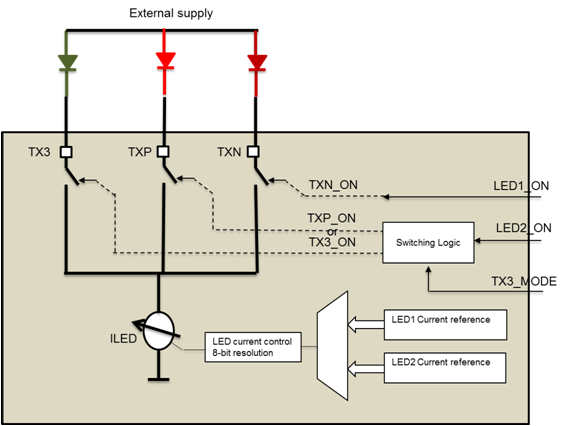ZHCSCL7C May 2014 – April 2021 AFE4403
PRODUCTION DATA
- 1 特性
- 2 应用
- 3 说明
- 4 Revision History
- 5 Device Family Options
- 6 Pin Configuration and Functions
- 7 Specifications
- 8 Detailed Description
- 9 Application Information Disclaimer
- 10Power Supply Recommendations
- 11Layout
- 12Device and Documentation Support
- 13Mechanical, Packaging, and Orderable Information
8.3.5.1 Third LED Support
A third LED can be optionally connected on the TX3 pin, as shown in Figure 8-18. An example application involving a third LED is where the Red and IR LEDs are connected on the TXP, TXN pins for pulse oximeter applications and a third LED (for example a Green LED) is connected on the TX3 pin for a heart rate monitoring application. The third LED can be connected only in common anode configuration. By programming the TX3_MODE register bit, the timing engine controls on TXP can be transferred to the TX3 pin. In this mode, the register bits that indicate the diagnostic results on the TXP pin now indicate the diagnostic results on the TX3 pin. The selection between using TX3 versus using TXP, TXN is intended as a static mode selection as opposed to a dynamic switching selection. A typical time delay of approximately 20 ms is required for the receive channel to settle after a change to the TX3_MODE setting. During this transition time, the receive signal chain should be active so that the filters are able to settle to the new signal level from the third LED.
 Figure 8-18 Multiplexing Third LED
Figure 8-18 Multiplexing Third LED